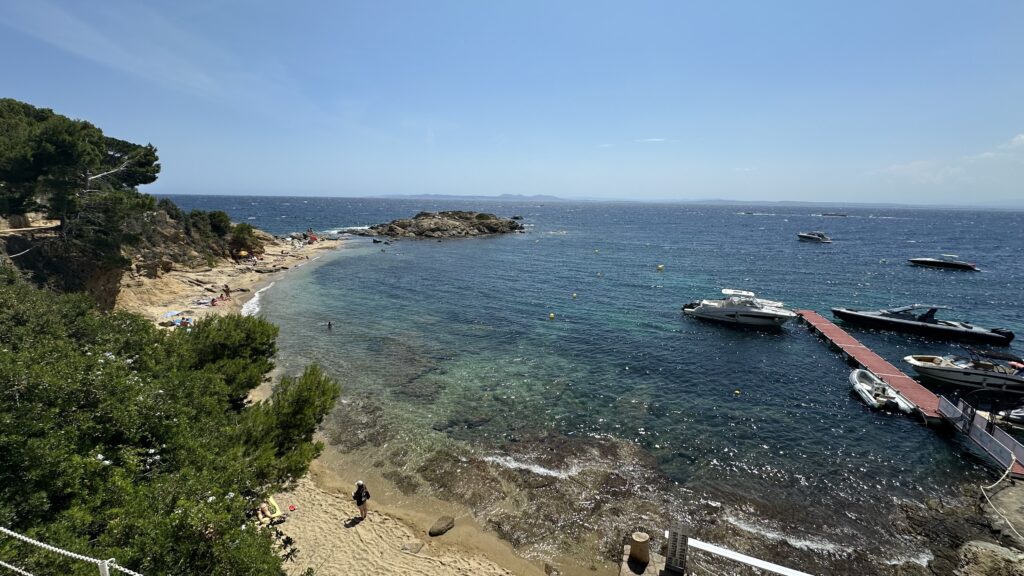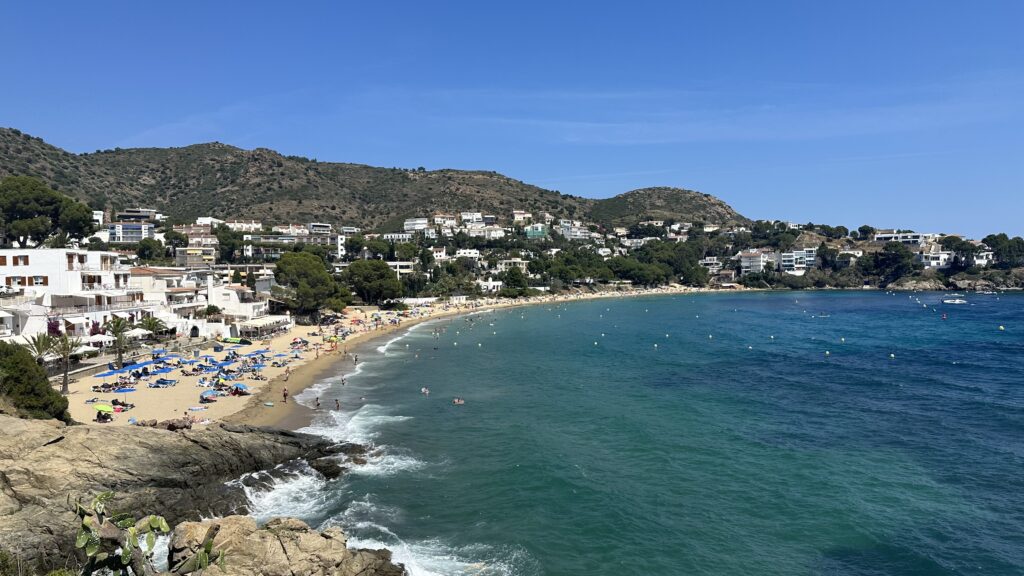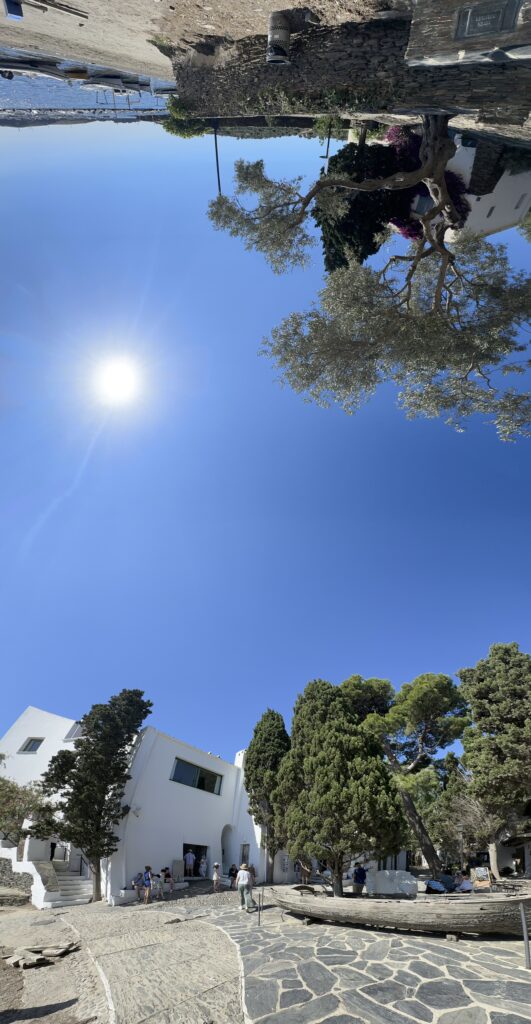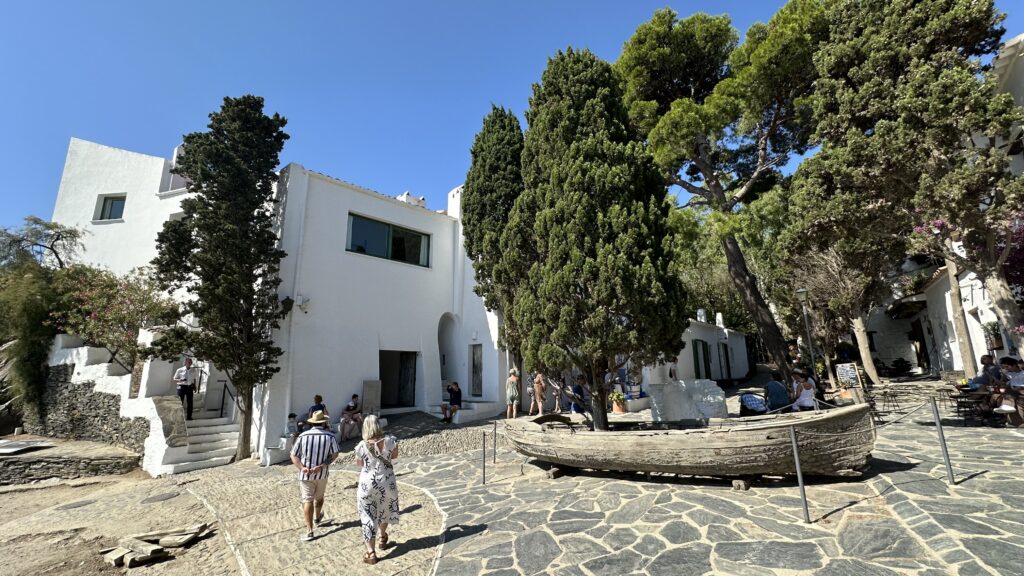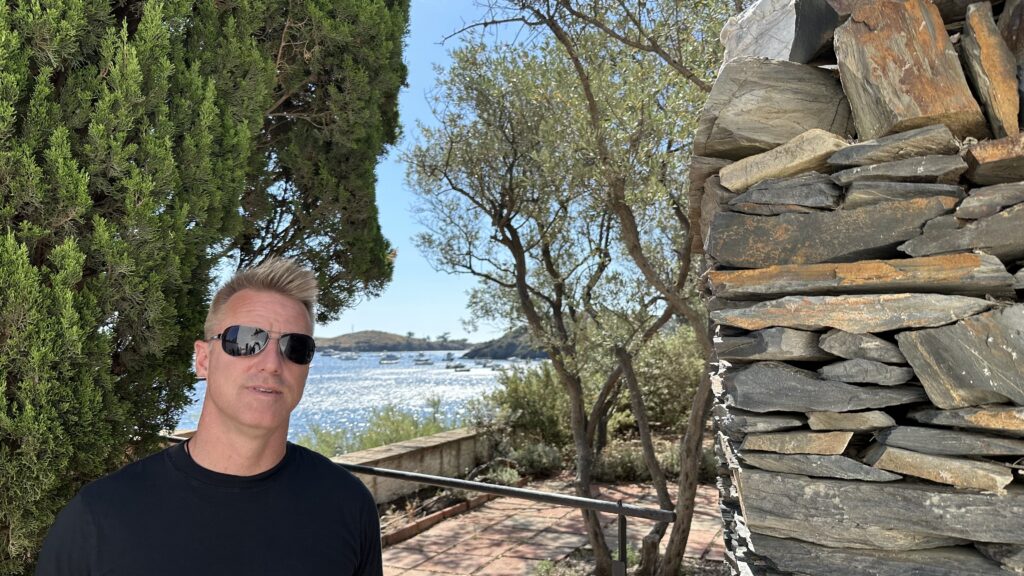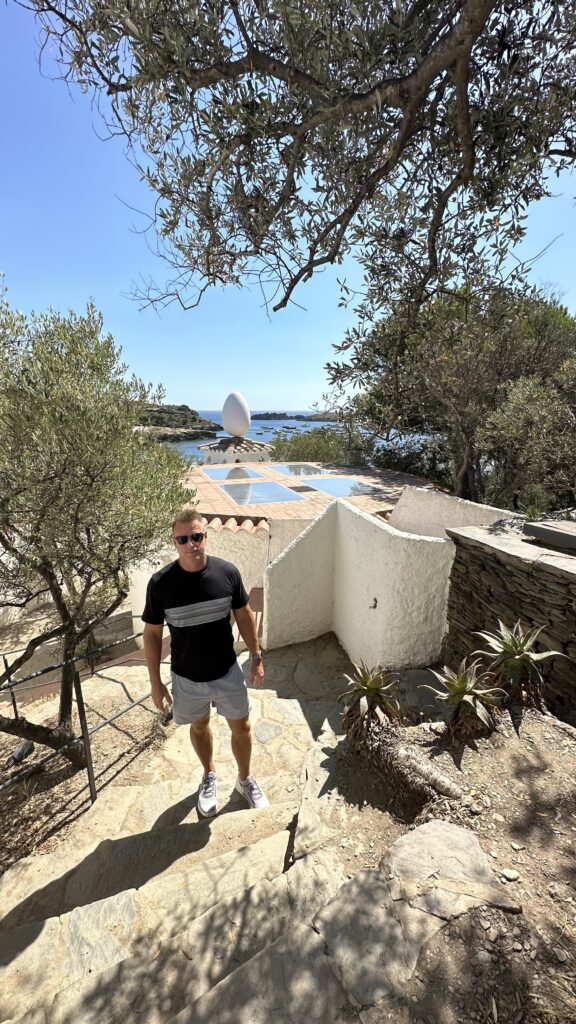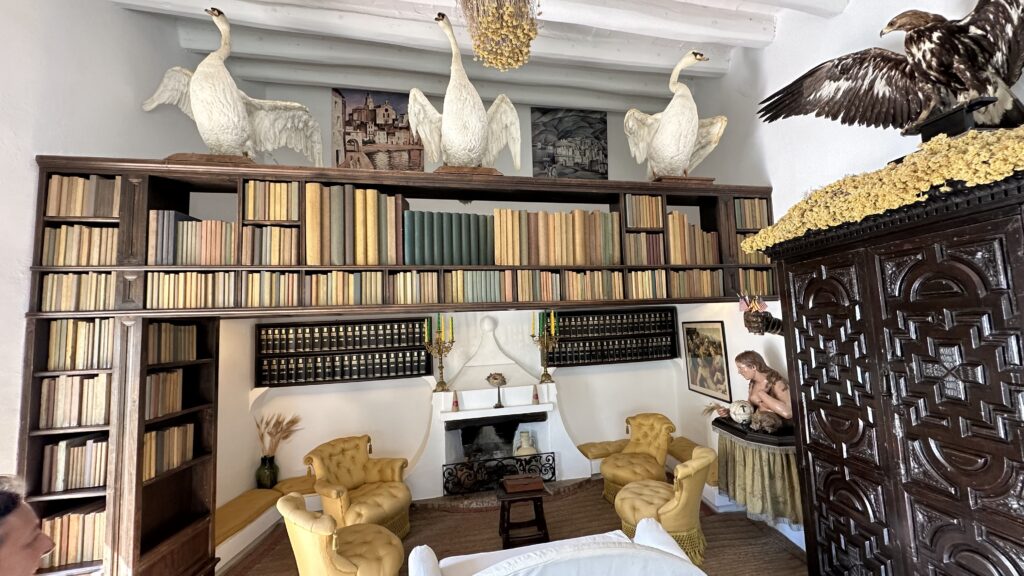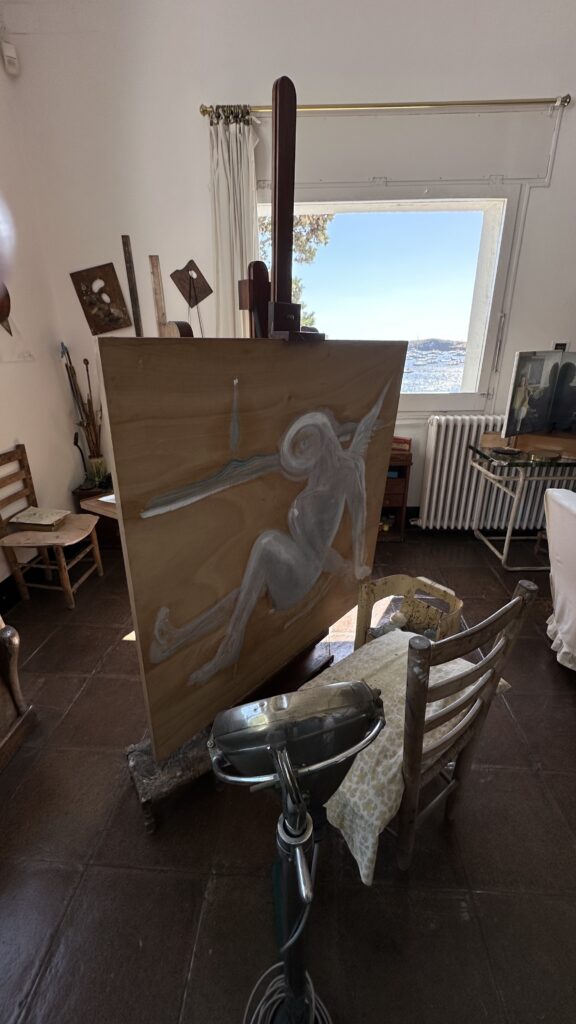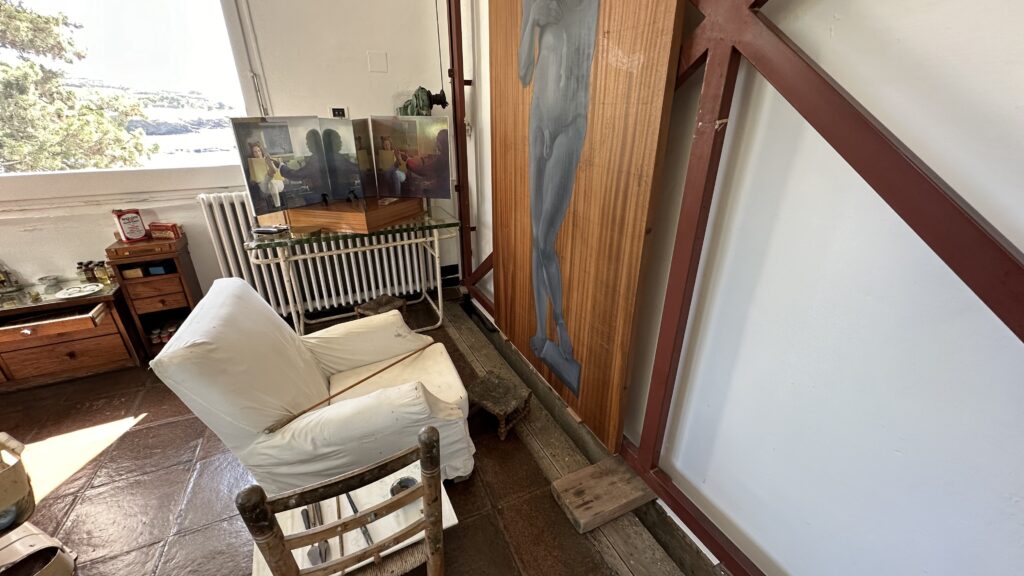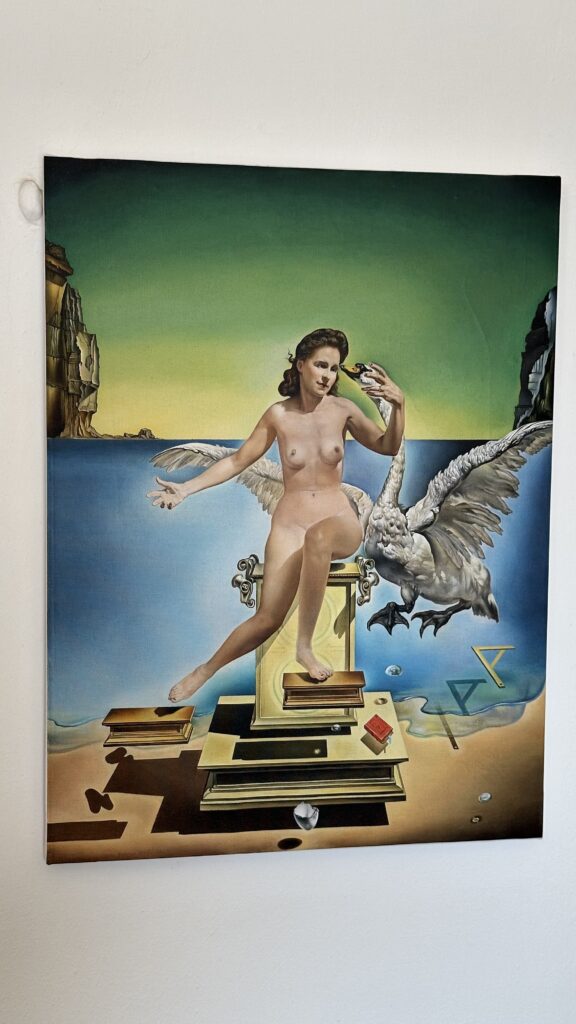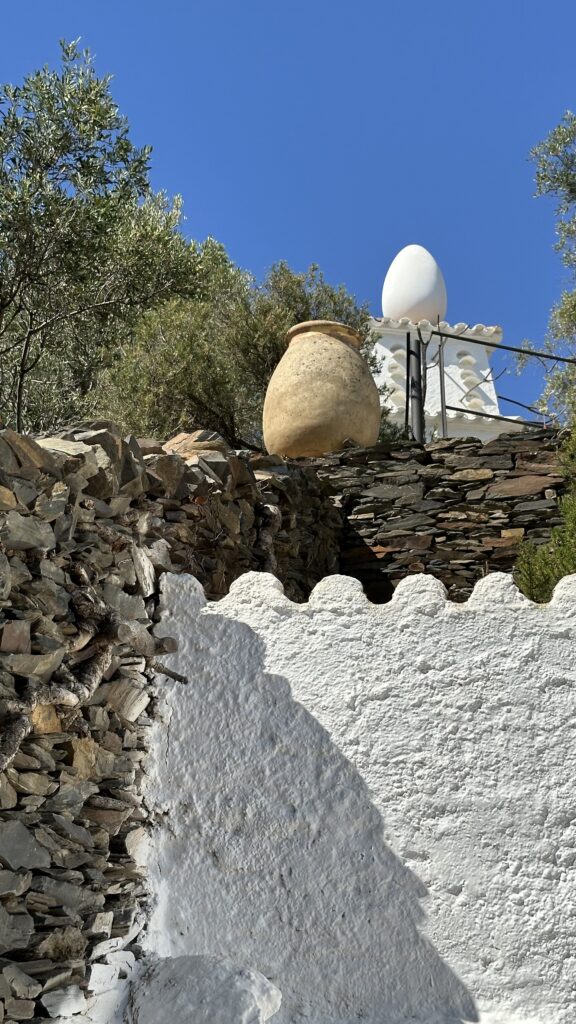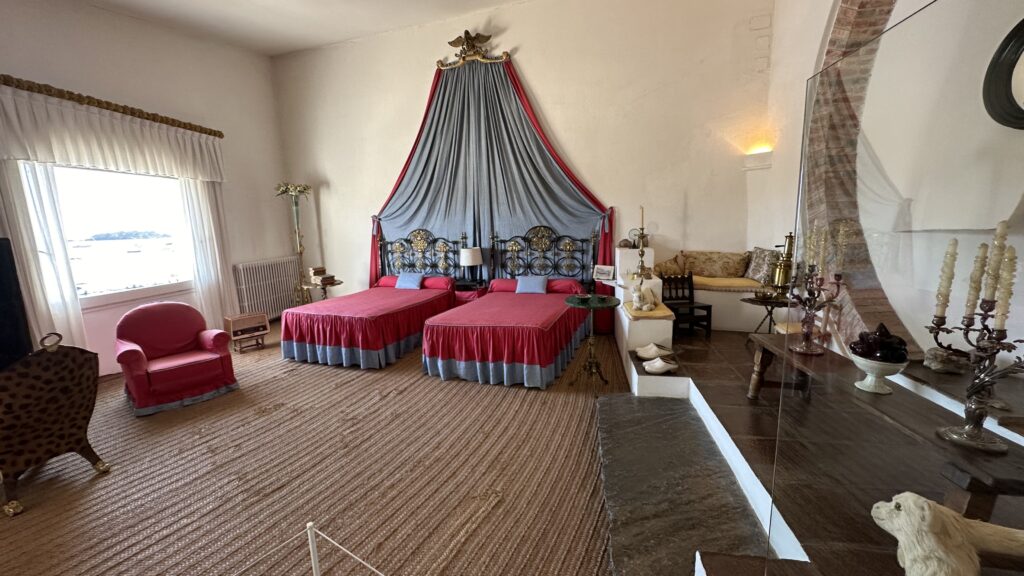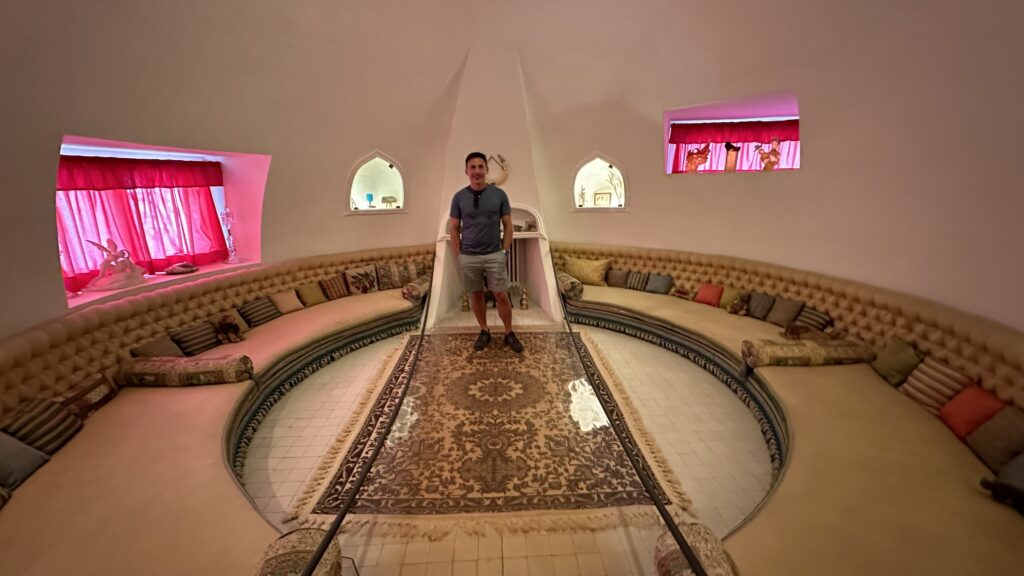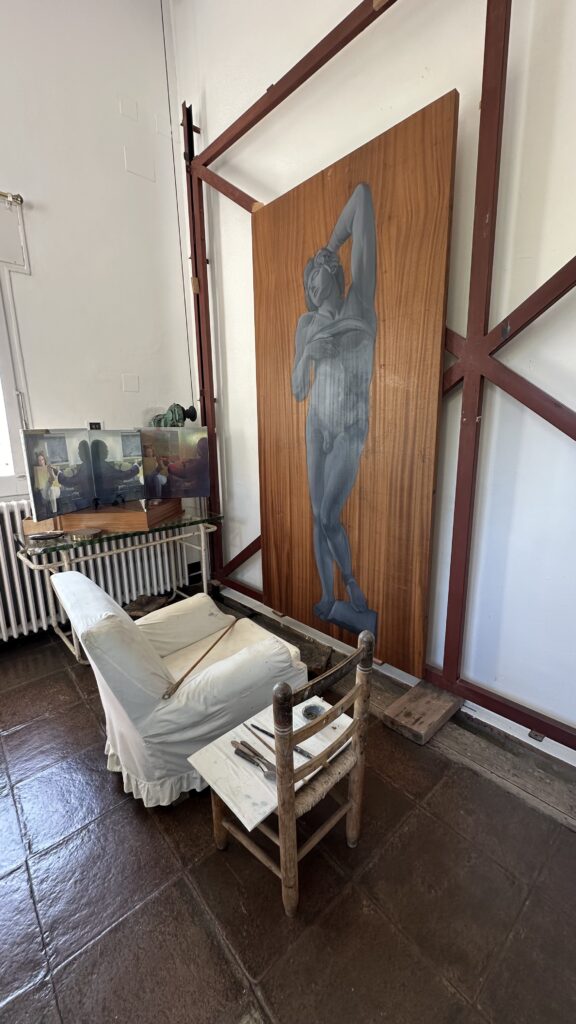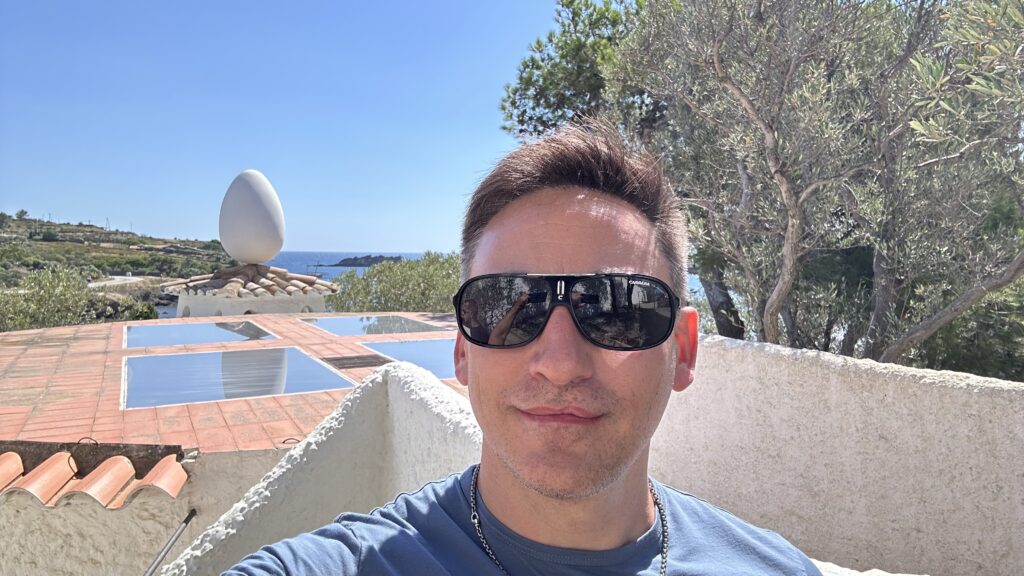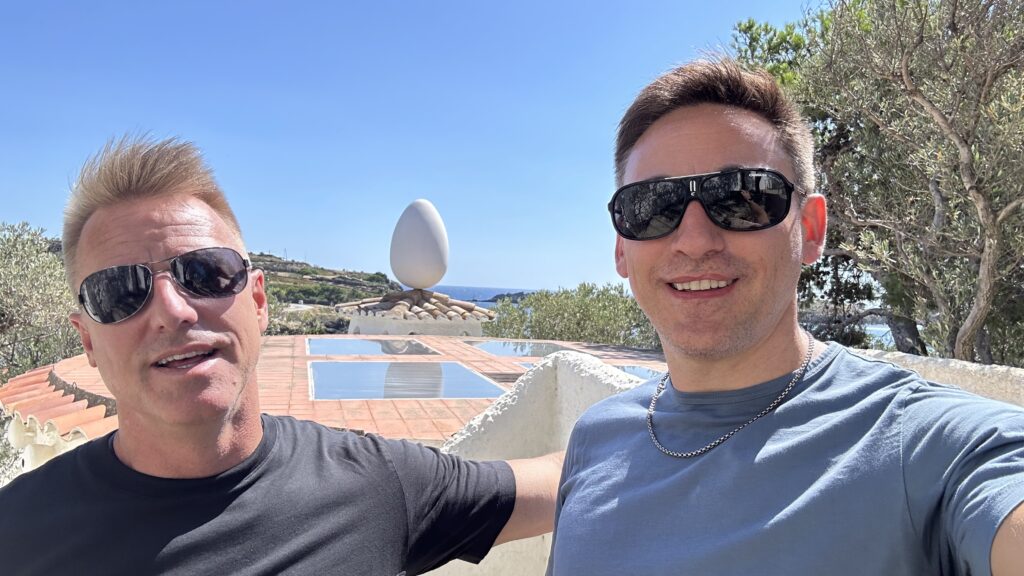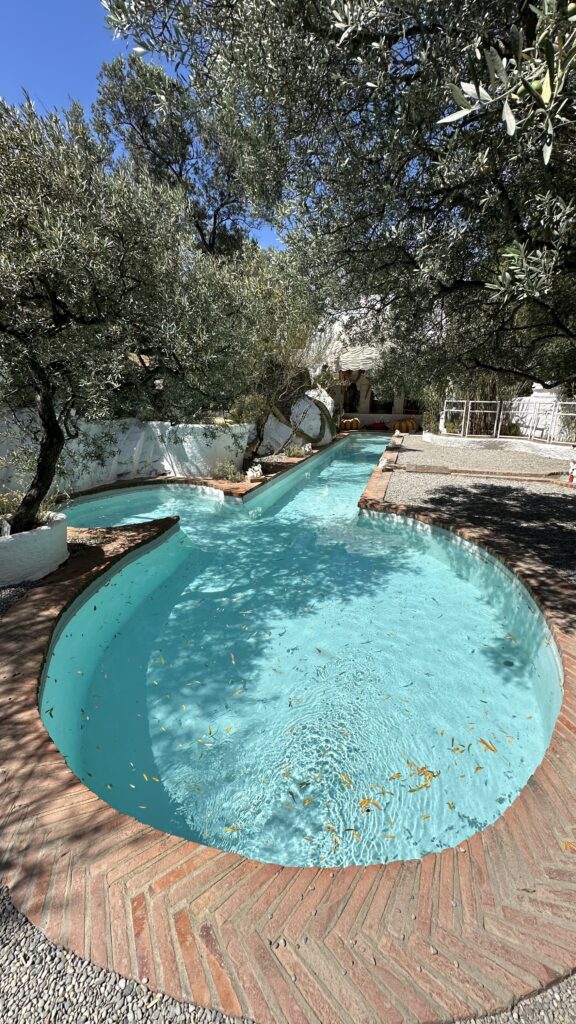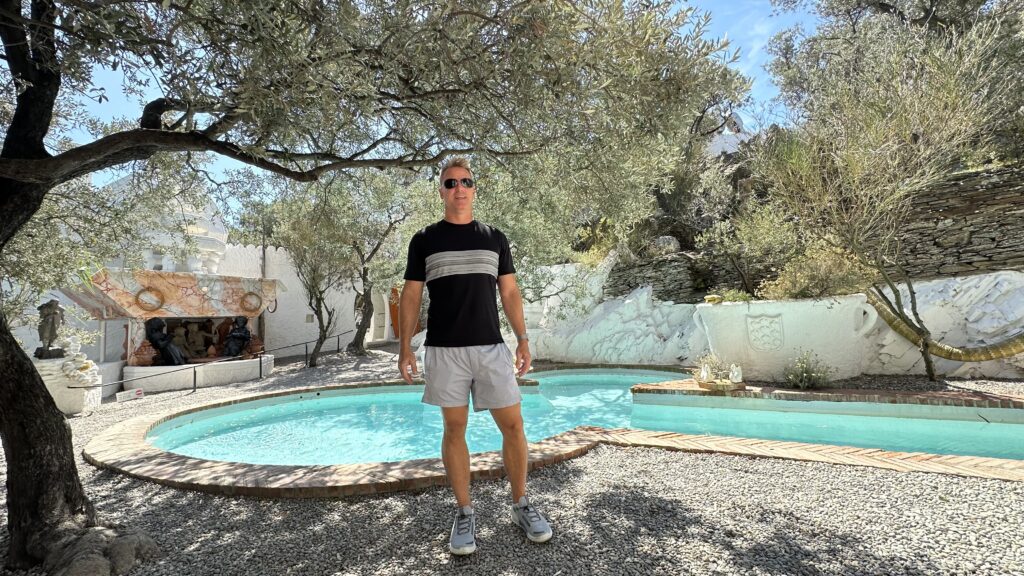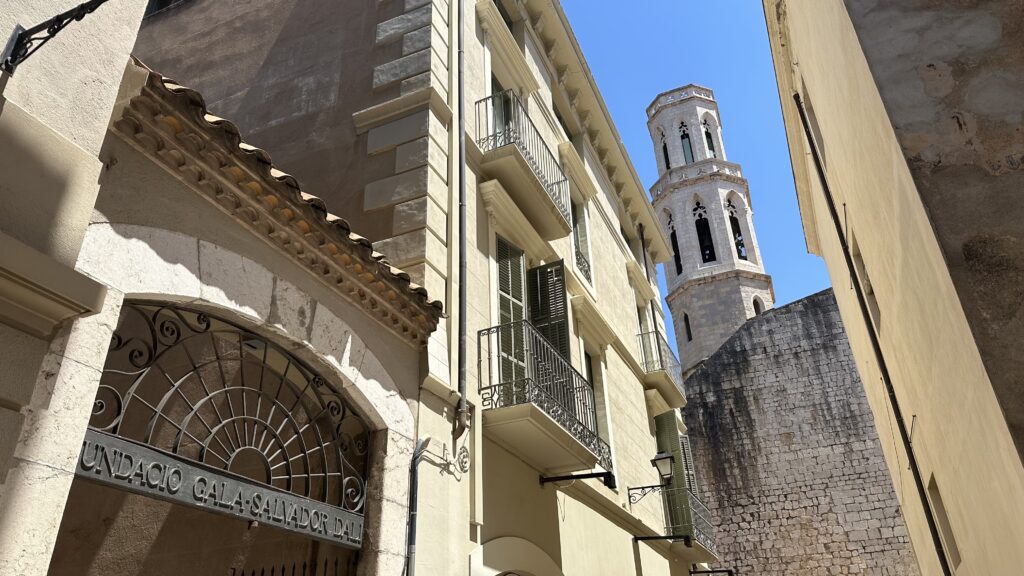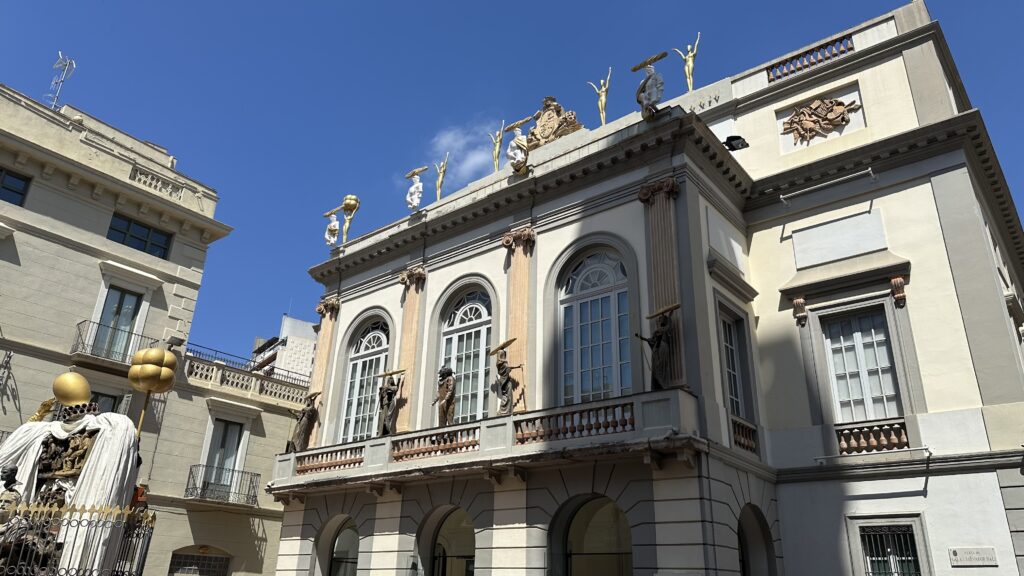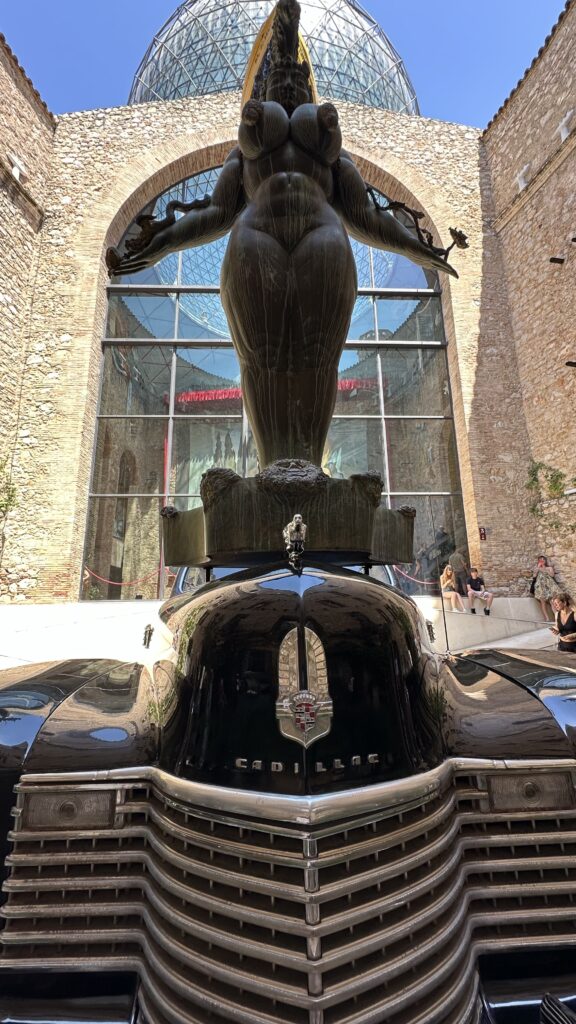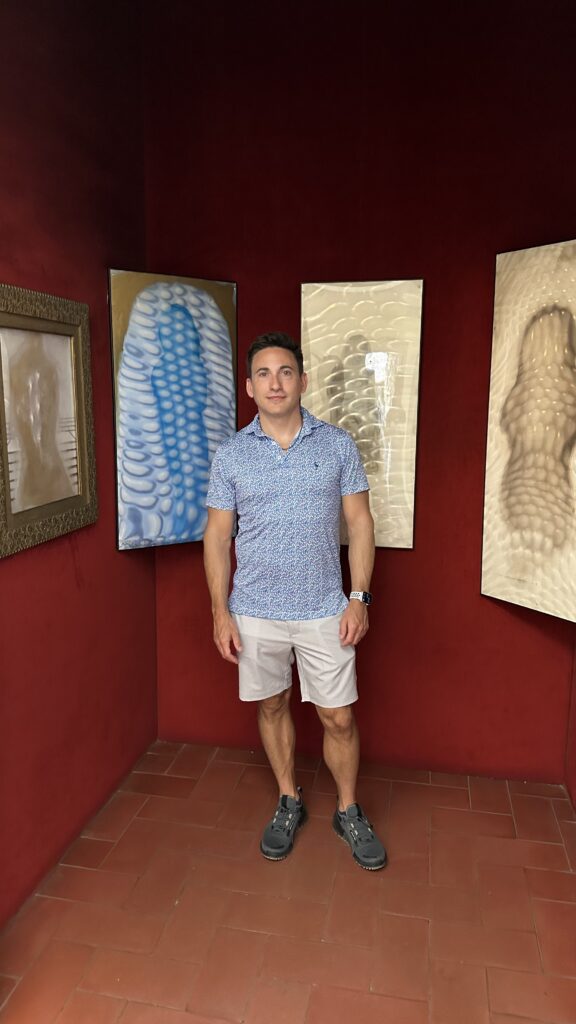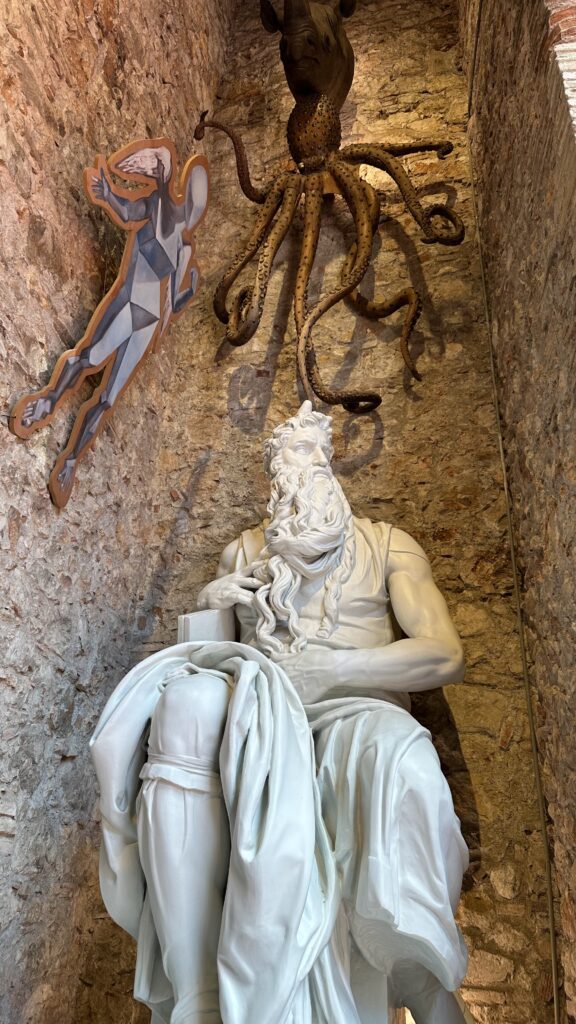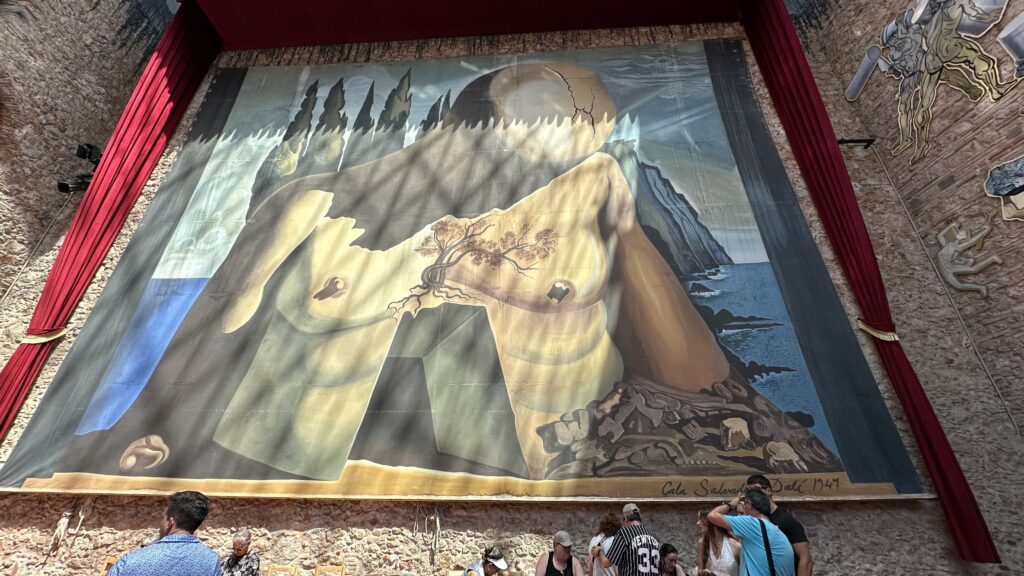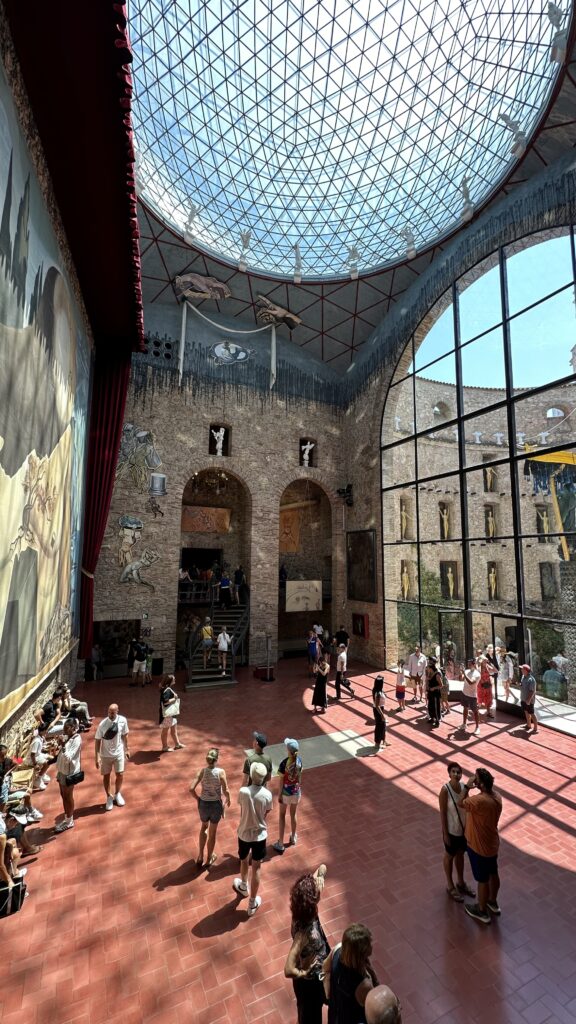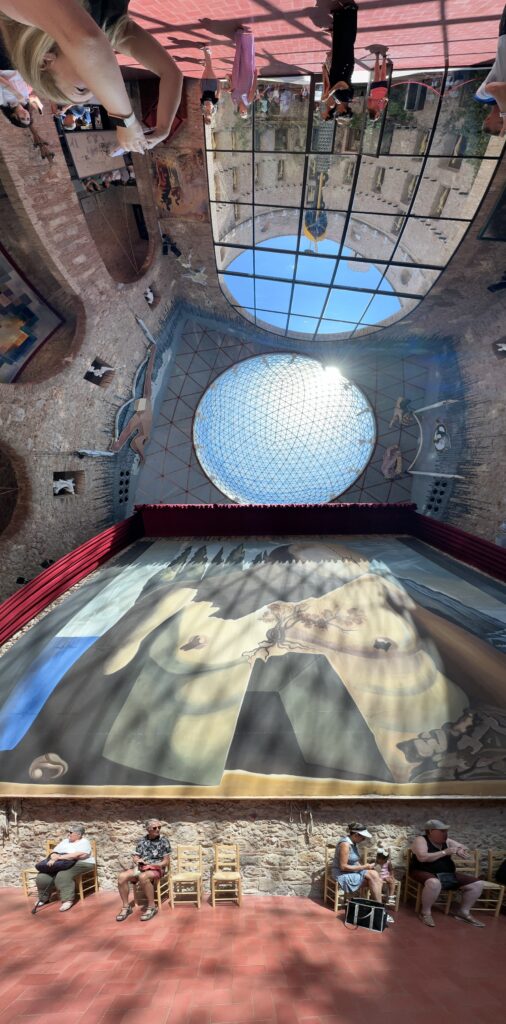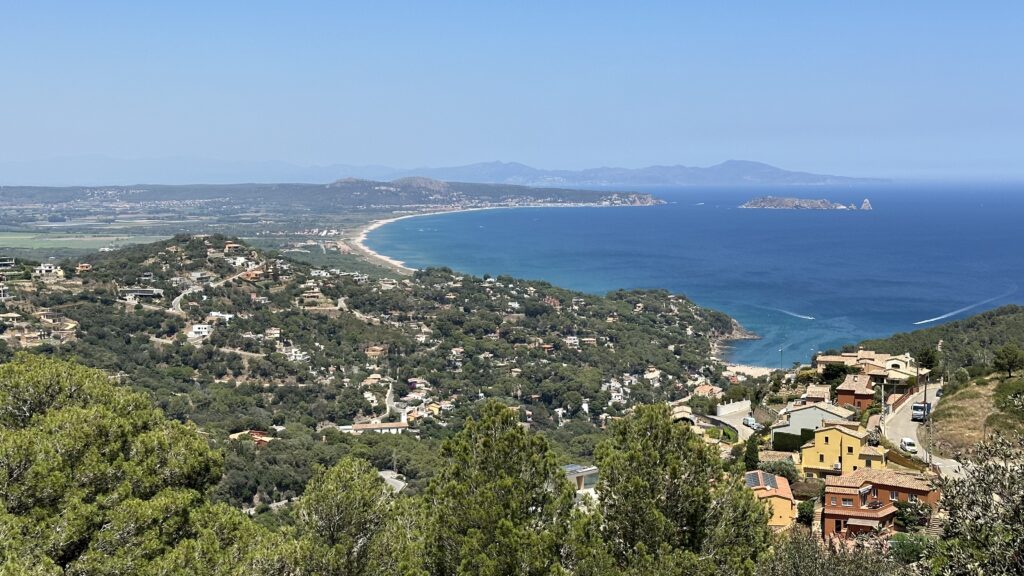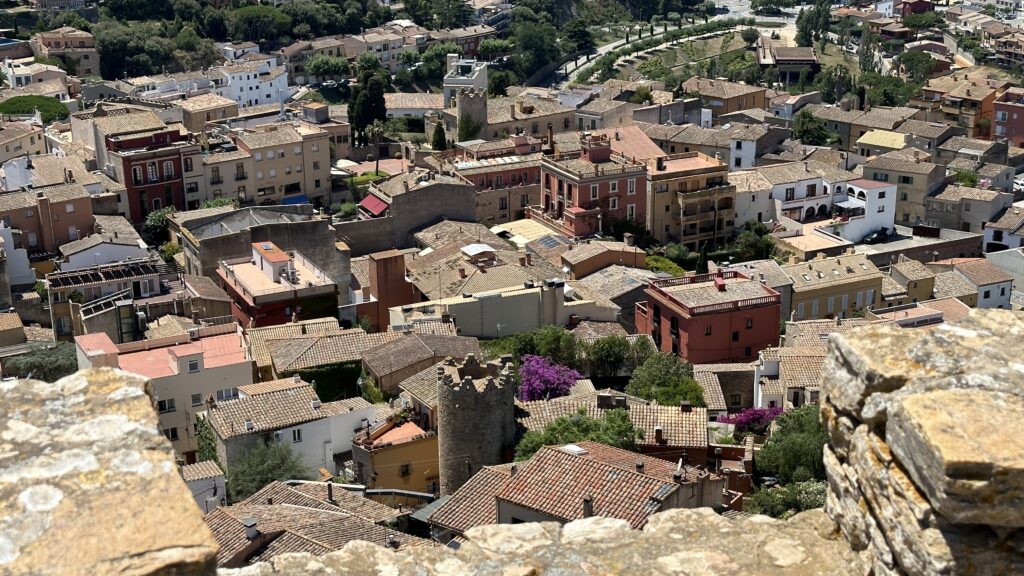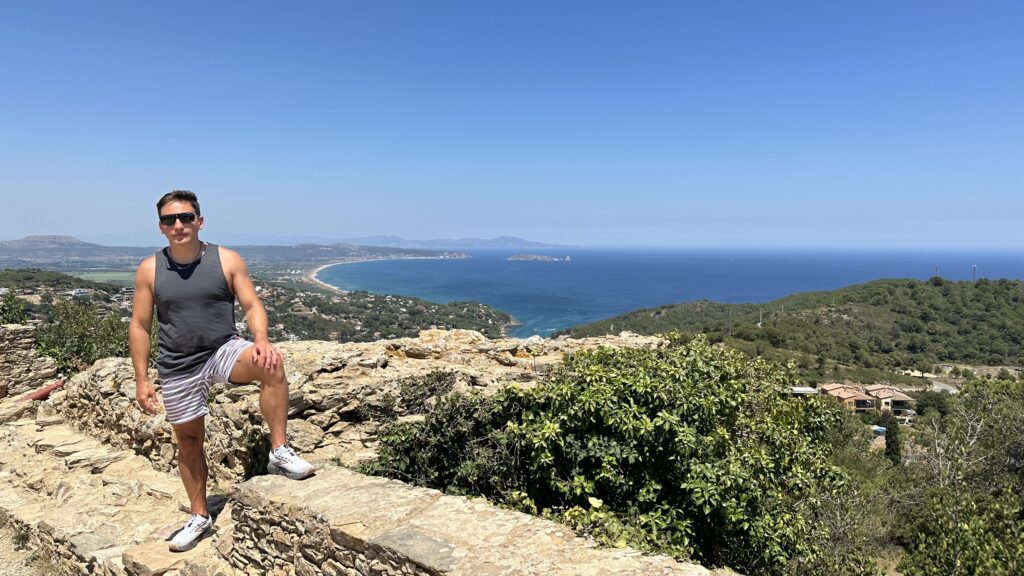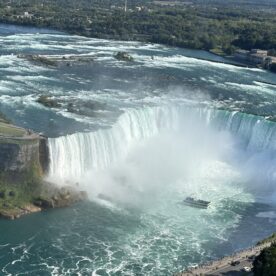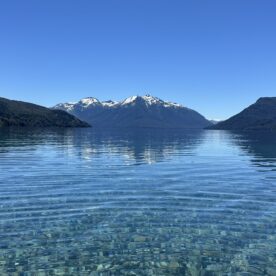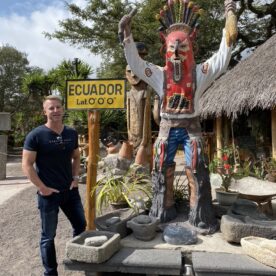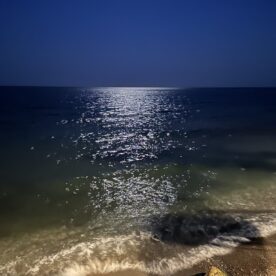Sun and Surrealist Shenanigans
Day 8: After a relaxing Start in Sitges, we decided to hit the road for a side adventure to the Costa Brava. Also, the side trip gave our hosts, Pancho and Gabriel, a well-deserved break from playing tour guides.
First stop, Roses—just a stone’s throw from the French border, the seaside town greeted us with its laid-back vibe, stunning views of cliffside houses, and turquoise Mediterranean waters. Roses has ancient origins, with its history tracing back to the 8th century BC when it was founded by Greek settlers from Rhodes (hence the name Roses). A rich blend of Greek, Roman, and medieval influences is still visible in its architecture and archaeological sites. Fun fact: the first language historically spoken in Roses was French, due to its proximity to the French border. Over time, Catalan became more common, reflecting the region’s deep cultural ties to Catalonia. Today, Spanish and English are also widely spoken, making Roses a multilingual tourist hub.
We checked into the ultra-luxurious Vistabella Hotel, where our suite seemed to hover over the ocean, offering jaw-dropping views. After settling in, we took a short stroll along Roses’ famous coastal walk, a perfect prelude to the relaxation and exploration that awaited us in Costa Brava.
Day 9: Adventure continued as we drove north over the mountains into Cadaqués, the eccentric and picturesque town that Salvador Dalí called home. The day was dedicated to exploring the surrealist wonderland that is as unique and quirky as the artist himself.
Nestled in a small village, this confusing structure began as several humble fisherman huts, which Dalí and his wife, Gala, gradually combined into the maze-like residence it is today. It was purposefully designed as a labyrinth, symbolizing their belief that life itself is a complex, winding journey. A curious detail is the house is filled with stuffed animals, particularly swans, reflecting Dalí’s fascination with them. An even more curious detail is his pool. Perfectly penis shaped, it is a bold and cheeky reflection of Dalí’s surrealist humor and fascination with sexuality. Rumor has it that guests loved the playful, provocative statement—a quintessentially Dalí-esque feature.
After soaking up Dalí’s eccentric genius in the surreal atmosphere of his personal enclave, we explored the historic center of Cadaqués and enjoyed a leisurely lunch before returning to the luxury of our hotel in Roses for yet another sun filled beach afternoon.
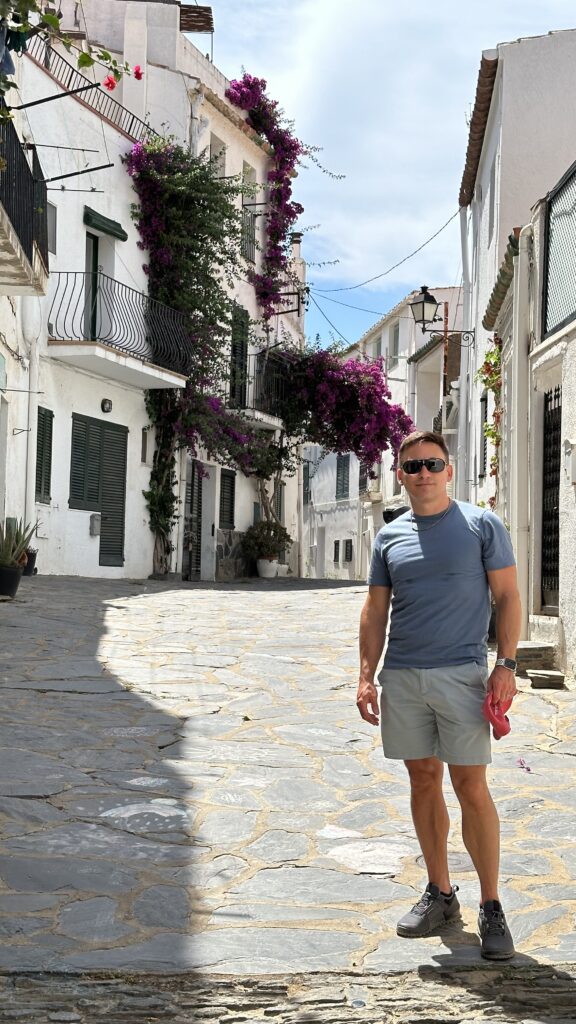
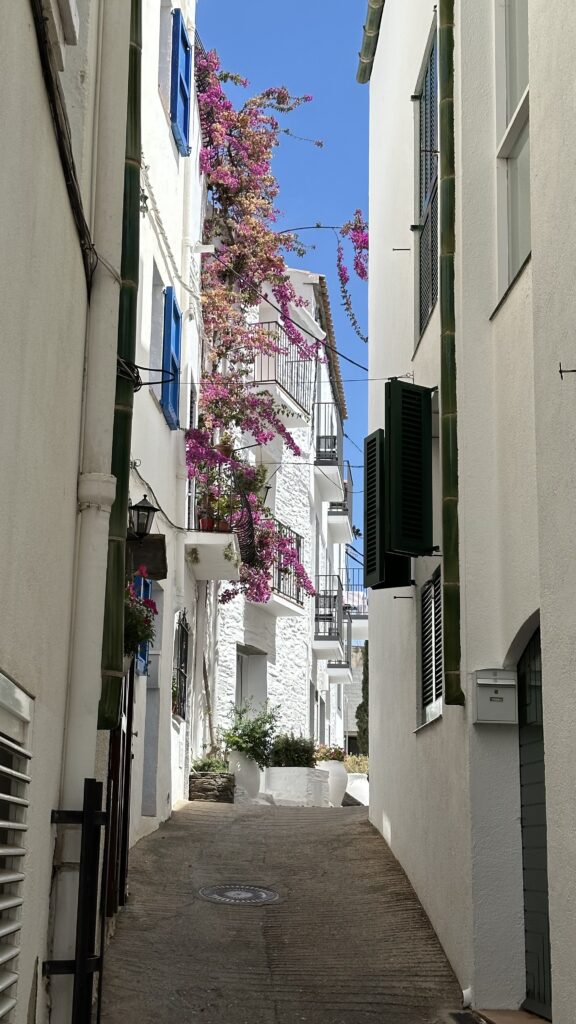

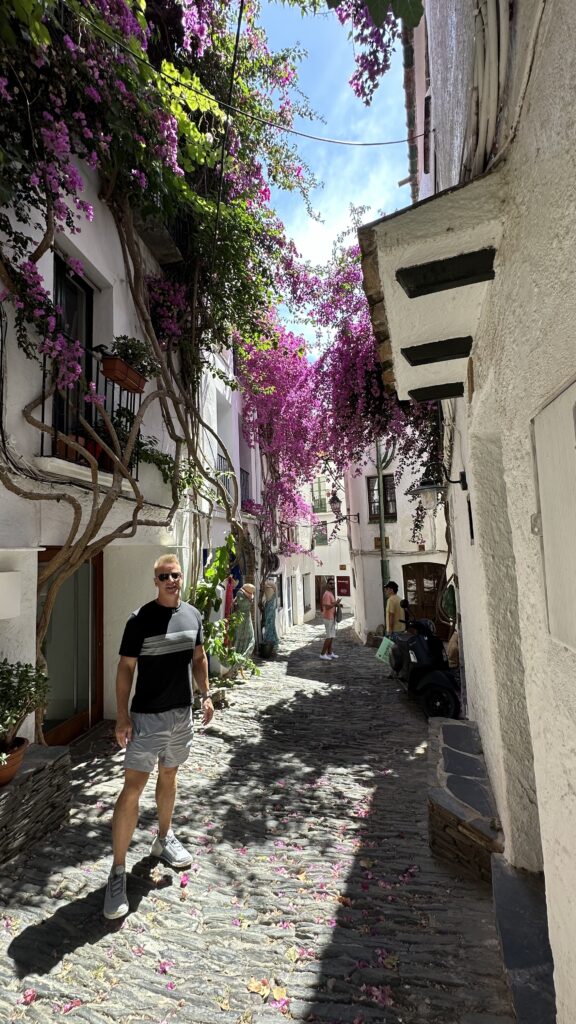
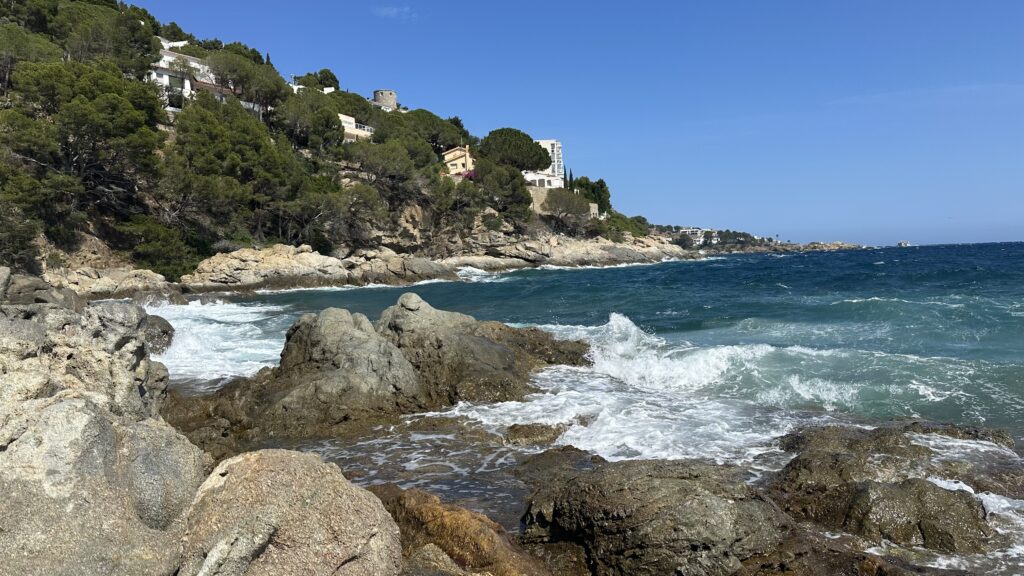
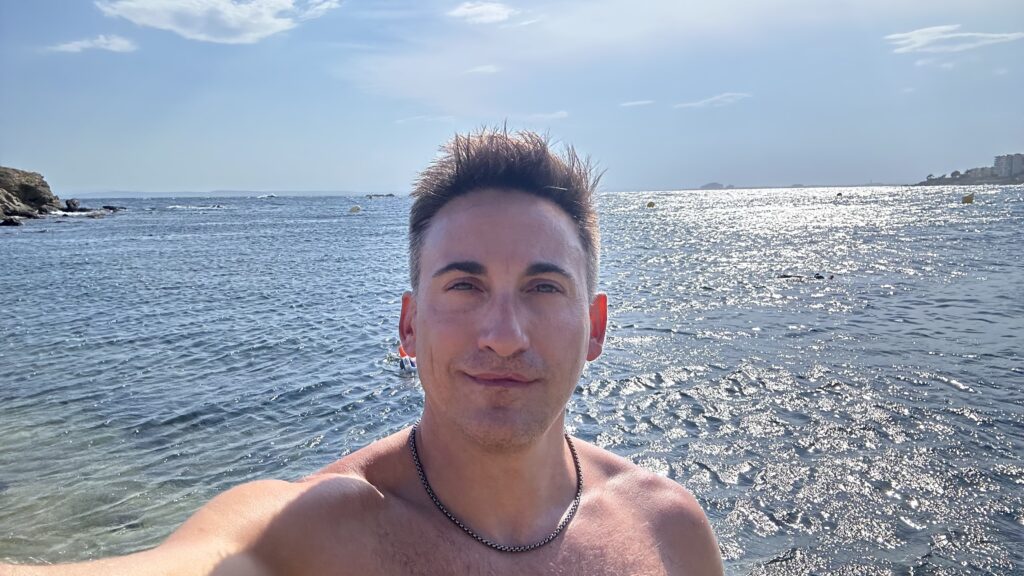
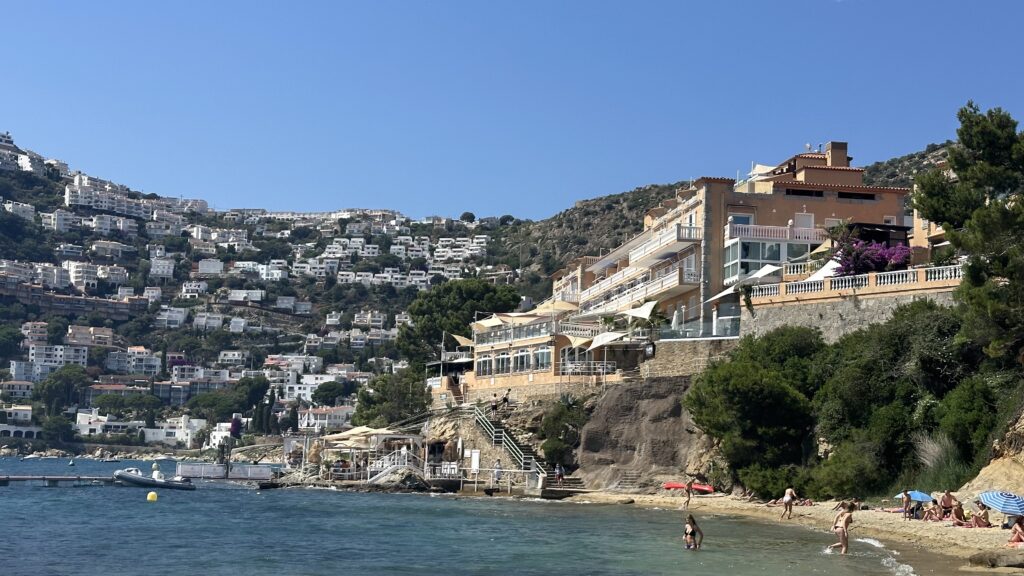
Day 10: Leaving the coastal charm of Roses behind, we headed inland to the town of Figueres, home to the extraordinary Dalí Theatre-Museum. This wasn’t just any museum—it was a masterpiece in itself, designed by Salvador Dalí who also personally oversaw construction and managed it until his death in 1989.
Walking through the museum is like stepping into Dalí’s mind, a surreal experience where reality and imagination blur together. Dalí chose to repurpose the town’s former municipal theater, which had been largely destroyed during the Spanish Civil War, restoring it into a monument to his life’s work. It was a vivid symbol of Dalí’s aversion to the violence and suffering caused by the war.
The museum’s exterior is just as eccentric as its contents, with giant eggs perched on the roof and a courtyard filled with surrealist sculptures, including a Cadillac that rains on the inside. The interior is a treasure trove of Salvador Dalí’s creativity, housing over 1,500 works that span his entire career. From paintings and drawings to sculptures, installations, and even holograms, the museum offers a comprehensive look at his genius. Must-see pieces include: The Mae West Room and Lip Sofa, an immersive installation where furniture is arranged to resemble the famous actress’s face when viewed through a special lens. It’s worth the extra, 30-minute line. Gala Contemplating the Mediterranean Sea, a double-image painting that, from a distance, transforms into a portrait of Abraham Lincoln and The Specter of Sex Appeal, are among the many pieces that showcase Dalí’s haunting, dreamlike art.
The true pièce de résistance is the artist’s tomb, which lies beneath the museum’s stage—a well suited resting place for a life full of drama and creativity.
Late afternoon, we left Figueres to return to the coast, arriving at the town of Begur and checking into the “adults only” Hotel Eetu. We did wonder what the qualifier meant when reserving, but, admittedly, the beautiful online photos convinced us to “Book Now” before reading all the fine print. Thankfully, adults only means no kids, not inclusion in an OnlyFans site. The hotel is an Art Deco gem that clings to the cliffs above the secluded beach, Playa Fornells. Eetu’s restaurant offers fresh, local ingredients and Catalan-inspired cuisine with historic mansions, vineyards, and the Mediterranean as its backdrop—honestly I can’t think of a better setting to enjoy a 7-course, chef’s menu paired with cava.
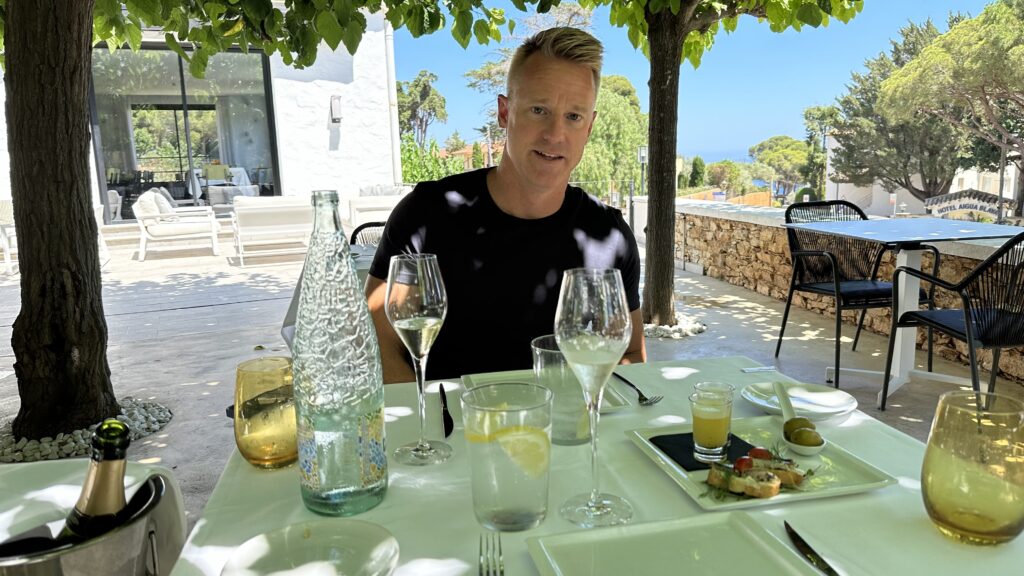

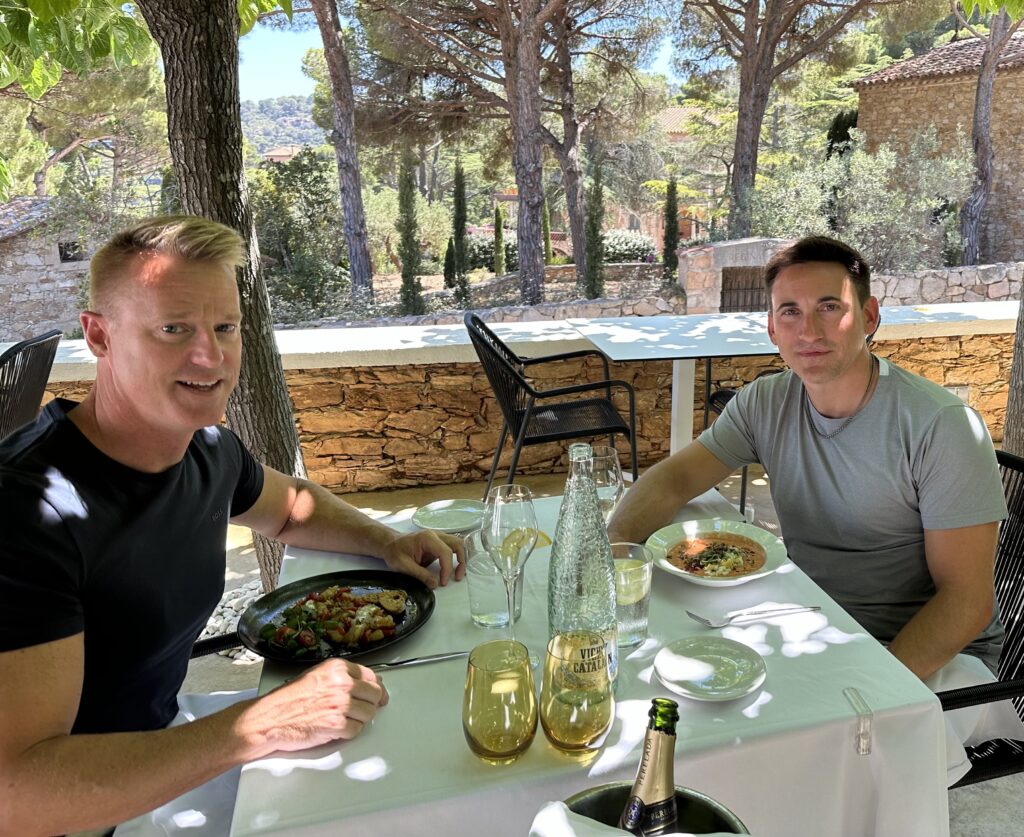
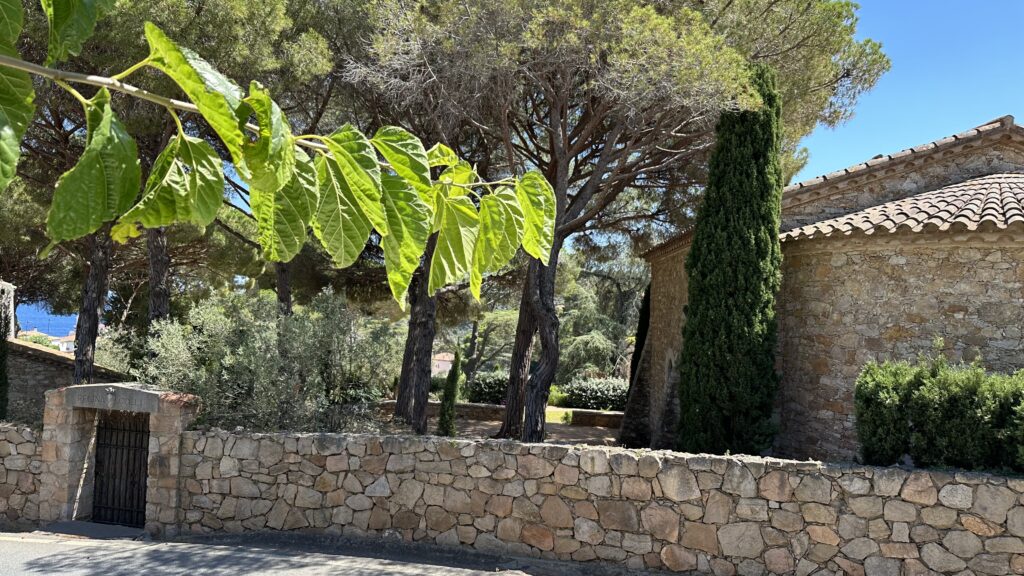
Day 11: Begur is the kind of place that feels like it was dreamed up by a travel writer after one too many glasses of sangria. Nestled in the middle of the Costa Brava, Begur has for centuries been the go-to vacation spot for Spain’s well-heeled, with its stunning views, ancient castles, and enough chic boutiques and restaurants to make your wallet cry for mercy. Begur’s history is a colorful mix of pirates, who once used its rocky coastline as hideouts, and wealthy Spaniards who returned from the Caribbean with enough rum money to build large, intricate mansions. Begur felt like Spain’s answer to Martha’s Vineyard—swanky, scenic, and oh-so-chic. Every meal was a chef-driven feast, with tasing menus that left us in culinary heaven.
Begur Castle, perched atop the town’s highest hill, offers views so spectacular that even locals visit regularly to take it all in. And let’s not forget the beaches—each one more beautiful than the last, all with turquoise water so clear, you’ll wonder if someone spiked it with Windex.
What better way to cool off from a hike to Begur Castle than a swim in the pristine waters of Illa Roja Beach? This little slice of paradise is famous for its towering red rock formations, which give the beach its name. Historically, the beach was a secret hideaway for locals who wanted to escape the prying eyes of nosy neighbors in Begur’s mountaintop village. Nowadays, it’s a popular spot for naturists, so don’t be surprised if you see more sunbathers in their birthday suits than in swimsuits. Just consider it part of the local charm.
The water at Illa Roja is so clear it’s like swimming in liquid glass, and the views of the rugged cliffs make you feel like you’ve stumbled into a Mediterranean postcard. After a refreshing dip and some sunbathing—don’t forget sunscreen for those new-to-sunshine parts— you’ll feel like you’ve found one of the world’s best-kept secrets. Just be sure to remember where you left your clothes when it’s time to leave!
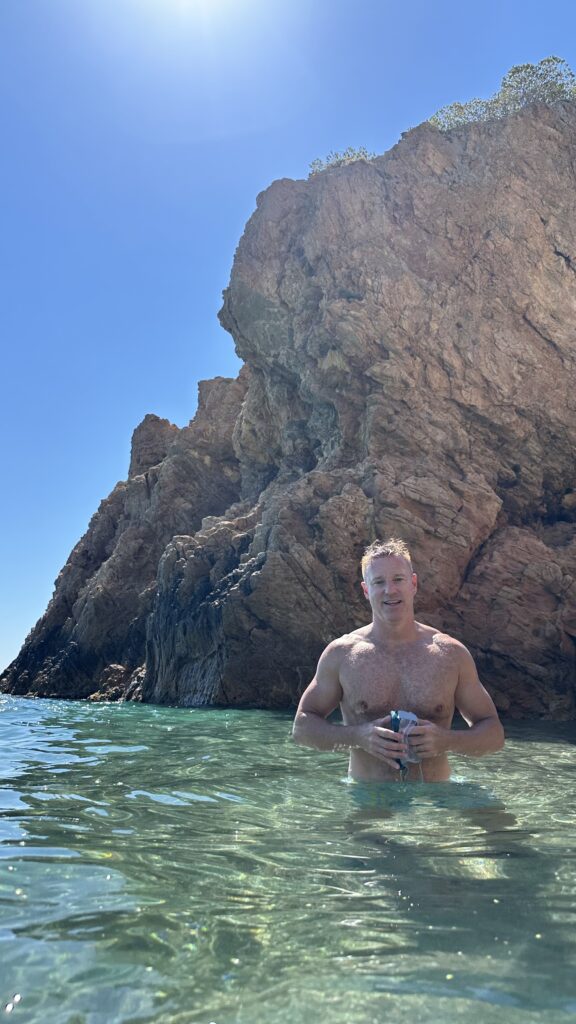
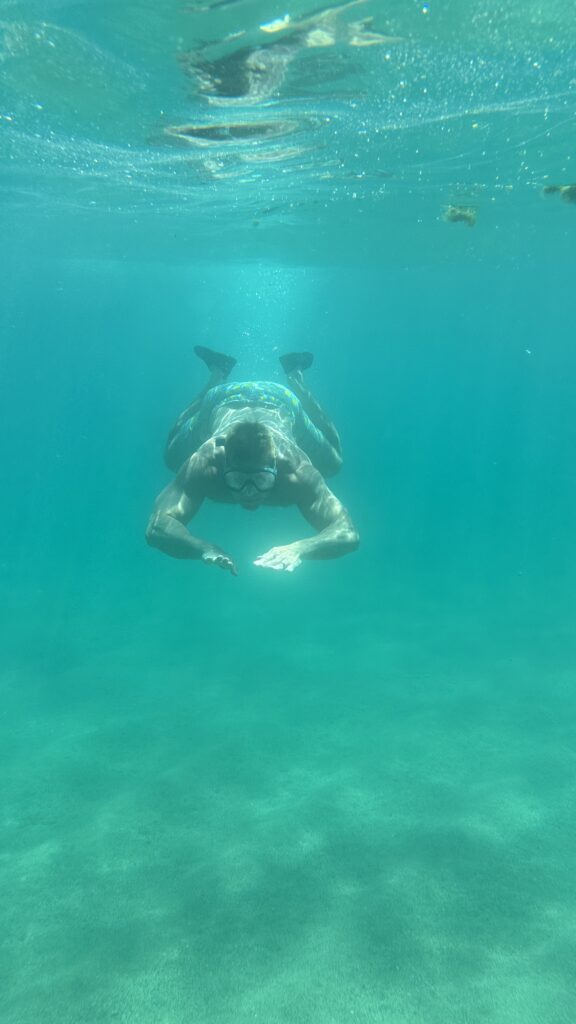
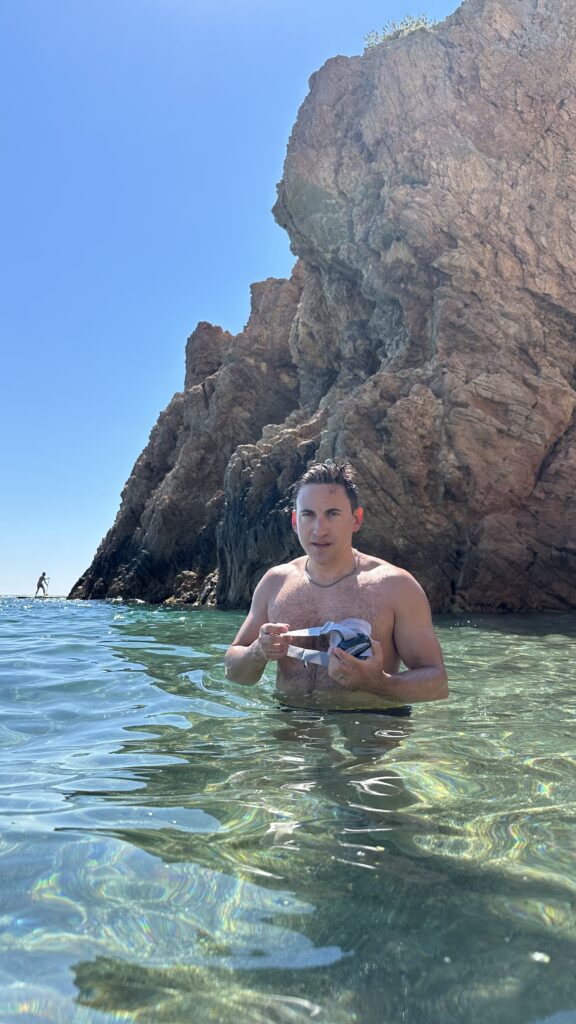
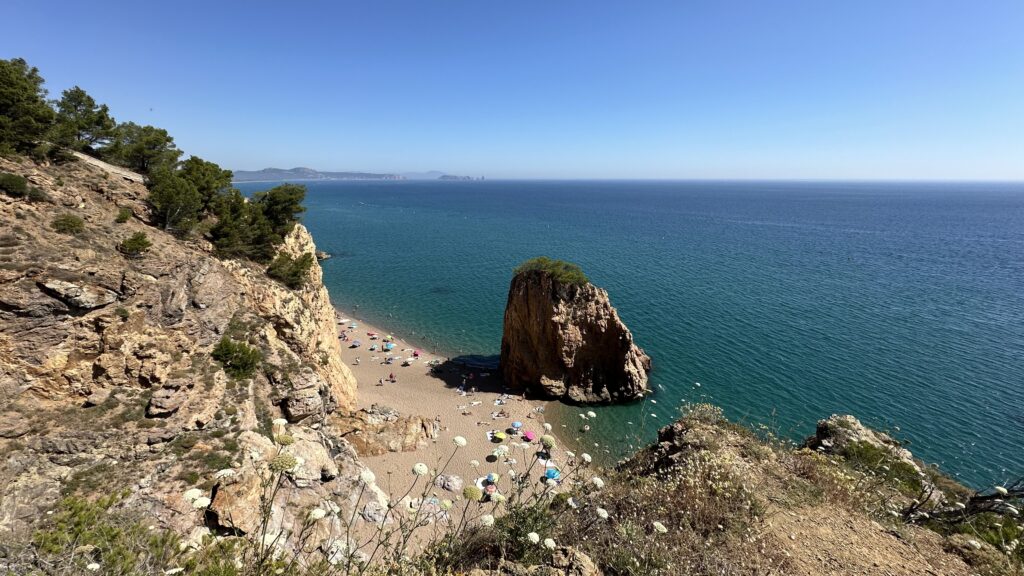

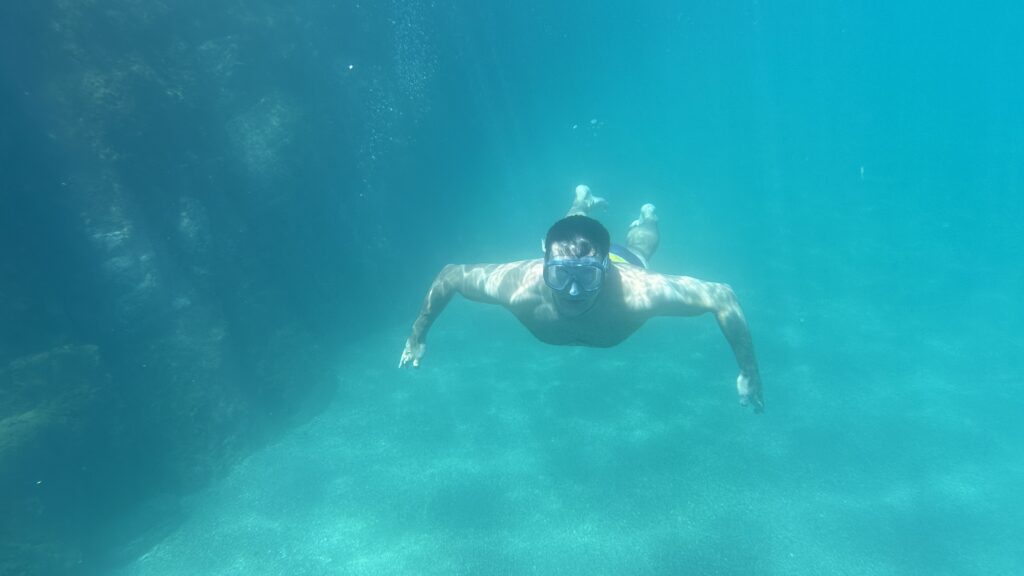
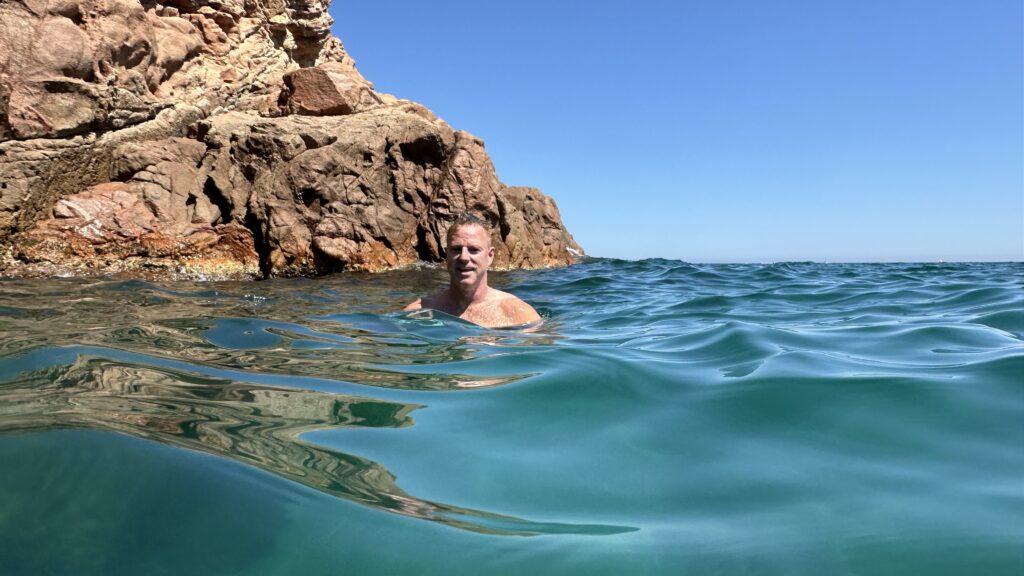
It was official … our time in Costa Brava provided the perfect setting to master the art of living like Catalan royalty: hiking the rugged coastline, lounging on stunning beaches, and indulging in Michelin-starred feasts like it was our birthright. We’d soaked up enough sun, sea, and surrealist art for the time being. All in all, we left Costa Brava sun-kissed, well-fed, and with enough stories to make our friends back home question whether we were on vacation or starring in our own European travel show. And yet, our adventure was just beginning … we were about to Return to Sitges and begin Basking in Barcelona.

